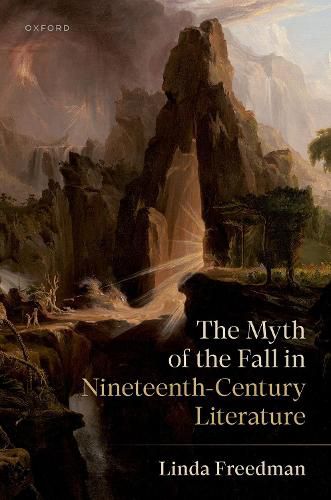Readings Newsletter
Become a Readings Member to make your shopping experience even easier.
Sign in or sign up for free!
You’re not far away from qualifying for FREE standard shipping within Australia
You’ve qualified for FREE standard shipping within Australia
The cart is loading…






Why does the myth of the Fall continue to matter in an increasingly secularised world? Why do we continue to imagine a point where everything went wrong, and why must we imagine that things were once better than they are now?
Modern political theodicies repeatedly play to the myth of the Fall as empowering human authorship, promising to 'take back control' or 'make America great again'. The myth of the Fall is so absorbed into western culture that we sometimes don't even notice it's there, let alone think about why and how it has persisted through secularisation. It is often pernicious, playing on feelings of innate supremacy and lost dominion. Linda Freedman shows that it is also creative, the first act of disobedience and resistance which set new human stories in motion and gave narrative shape to existence.
Nineteenth-century writers were so steeped in Christian traditions that the Fall remained an ineluctable structure of thought and even those who resisted or tried to secularise its doctrinal orthodoxies tended to affirm its logic. It was a political, social, and cultural force as well as an aesthetic preoccupation, a way of reflecting on the limitations and possibilities of art and literature, driving innovations in prose, poetry, and the novel.
Rethinking narratives of American exceptionalism with transatlantic and anti-racist writings, Freedman captures some of the most theologically imaginative and aesthetically and politically interesting textures of the Fall in nineteenth-century literature. The myth of the Fall survives as much more than a judgmental and repressive social mechanism and mattered to people living vastly different lives--this is partly due to the adaptability and force of its narrative logic and partly because it gives narrative time the feel of a quest, an infinite search for meaning. The Fall holds onto the otherworldly and the unworldly. It serves as a formal metalanguage, a residually, and sometimes explicitly, religious aesthetic, an origin myth of modernity--a source for being in time.
$9.00 standard shipping within Australia
FREE standard shipping within Australia for orders over $100.00
Express & International shipping calculated at checkout
Why does the myth of the Fall continue to matter in an increasingly secularised world? Why do we continue to imagine a point where everything went wrong, and why must we imagine that things were once better than they are now?
Modern political theodicies repeatedly play to the myth of the Fall as empowering human authorship, promising to 'take back control' or 'make America great again'. The myth of the Fall is so absorbed into western culture that we sometimes don't even notice it's there, let alone think about why and how it has persisted through secularisation. It is often pernicious, playing on feelings of innate supremacy and lost dominion. Linda Freedman shows that it is also creative, the first act of disobedience and resistance which set new human stories in motion and gave narrative shape to existence.
Nineteenth-century writers were so steeped in Christian traditions that the Fall remained an ineluctable structure of thought and even those who resisted or tried to secularise its doctrinal orthodoxies tended to affirm its logic. It was a political, social, and cultural force as well as an aesthetic preoccupation, a way of reflecting on the limitations and possibilities of art and literature, driving innovations in prose, poetry, and the novel.
Rethinking narratives of American exceptionalism with transatlantic and anti-racist writings, Freedman captures some of the most theologically imaginative and aesthetically and politically interesting textures of the Fall in nineteenth-century literature. The myth of the Fall survives as much more than a judgmental and repressive social mechanism and mattered to people living vastly different lives--this is partly due to the adaptability and force of its narrative logic and partly because it gives narrative time the feel of a quest, an infinite search for meaning. The Fall holds onto the otherworldly and the unworldly. It serves as a formal metalanguage, a residually, and sometimes explicitly, religious aesthetic, an origin myth of modernity--a source for being in time.